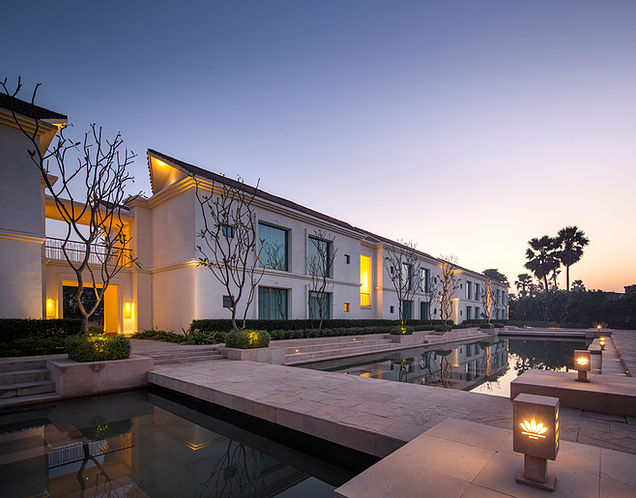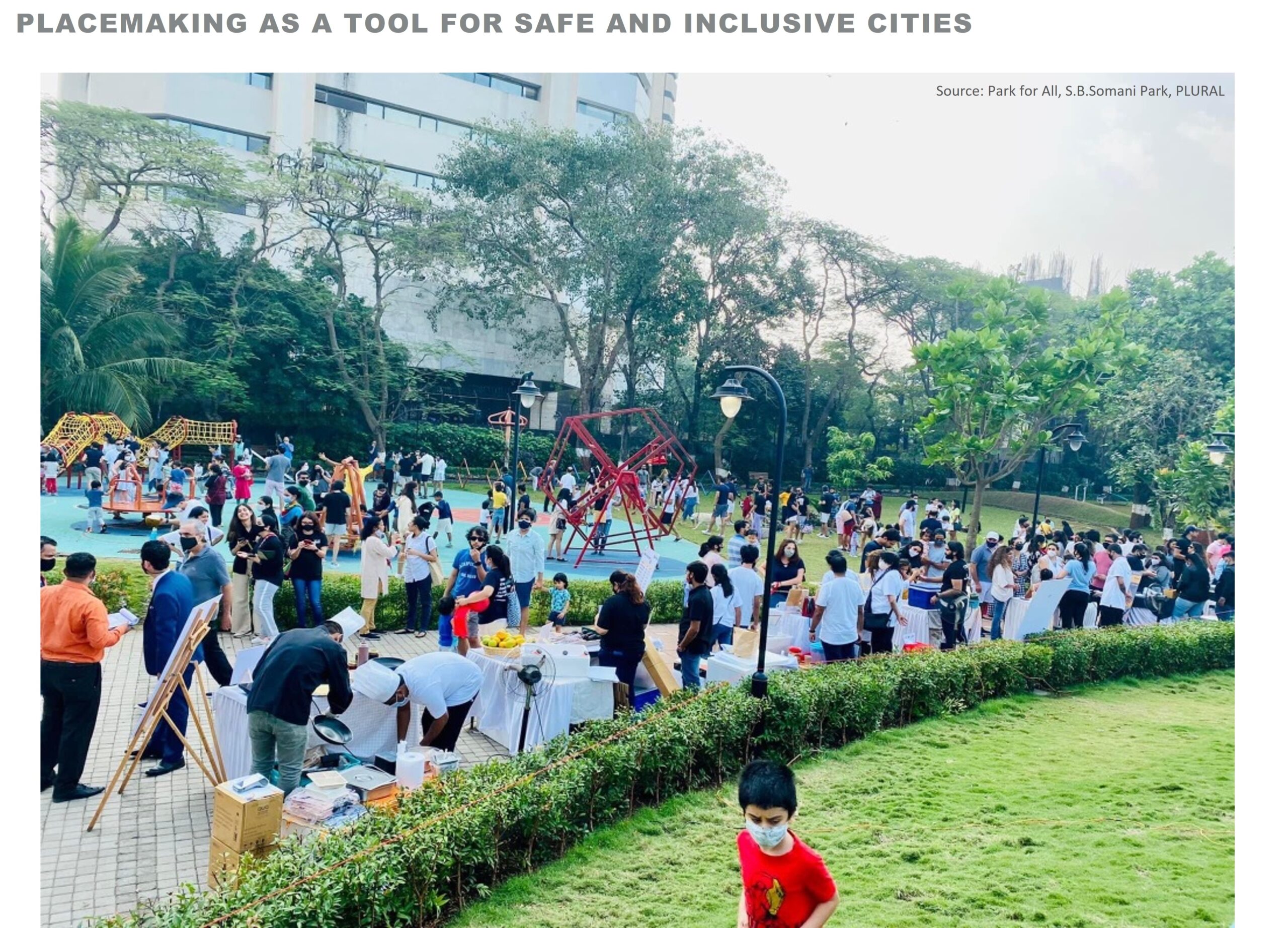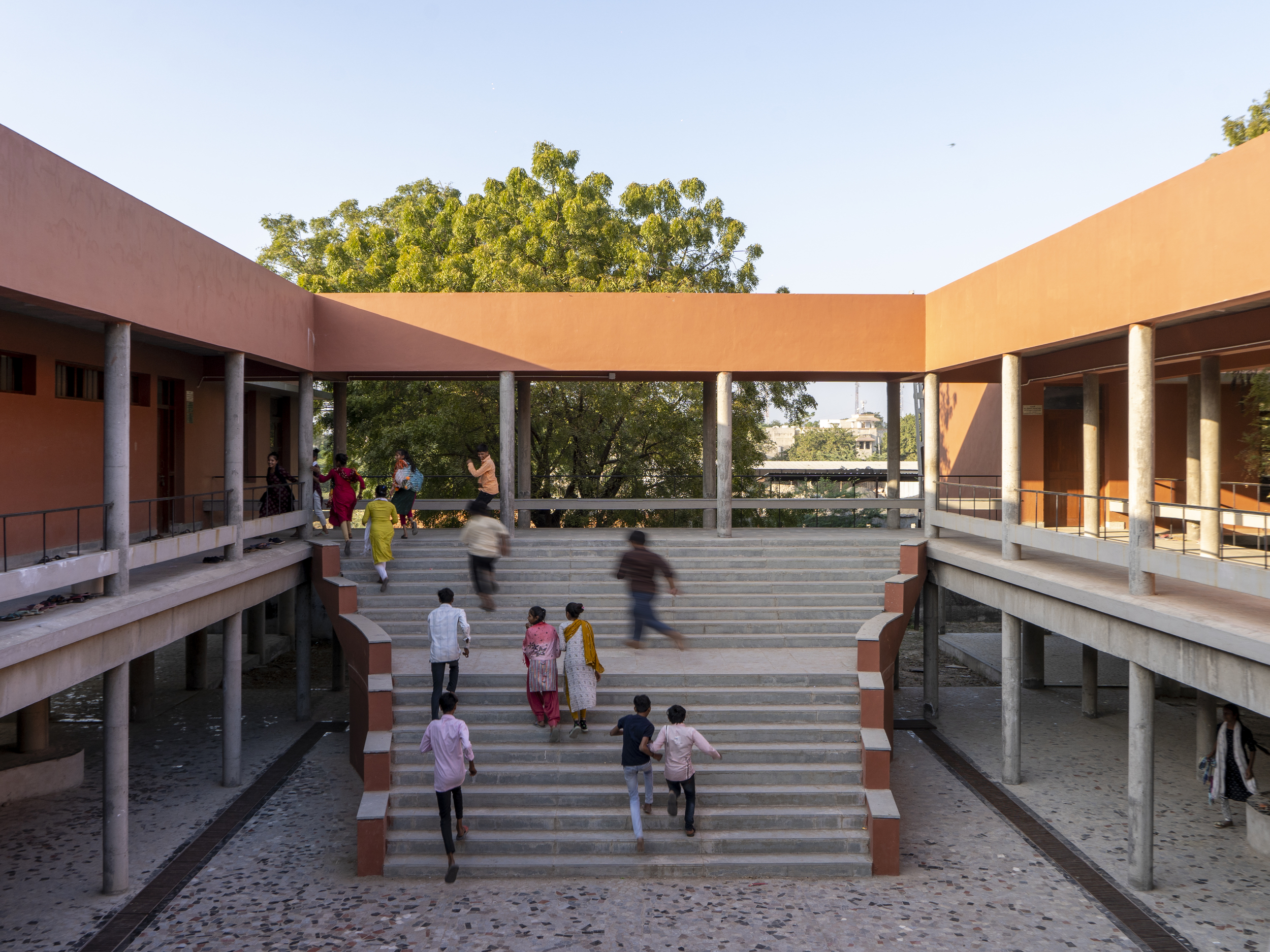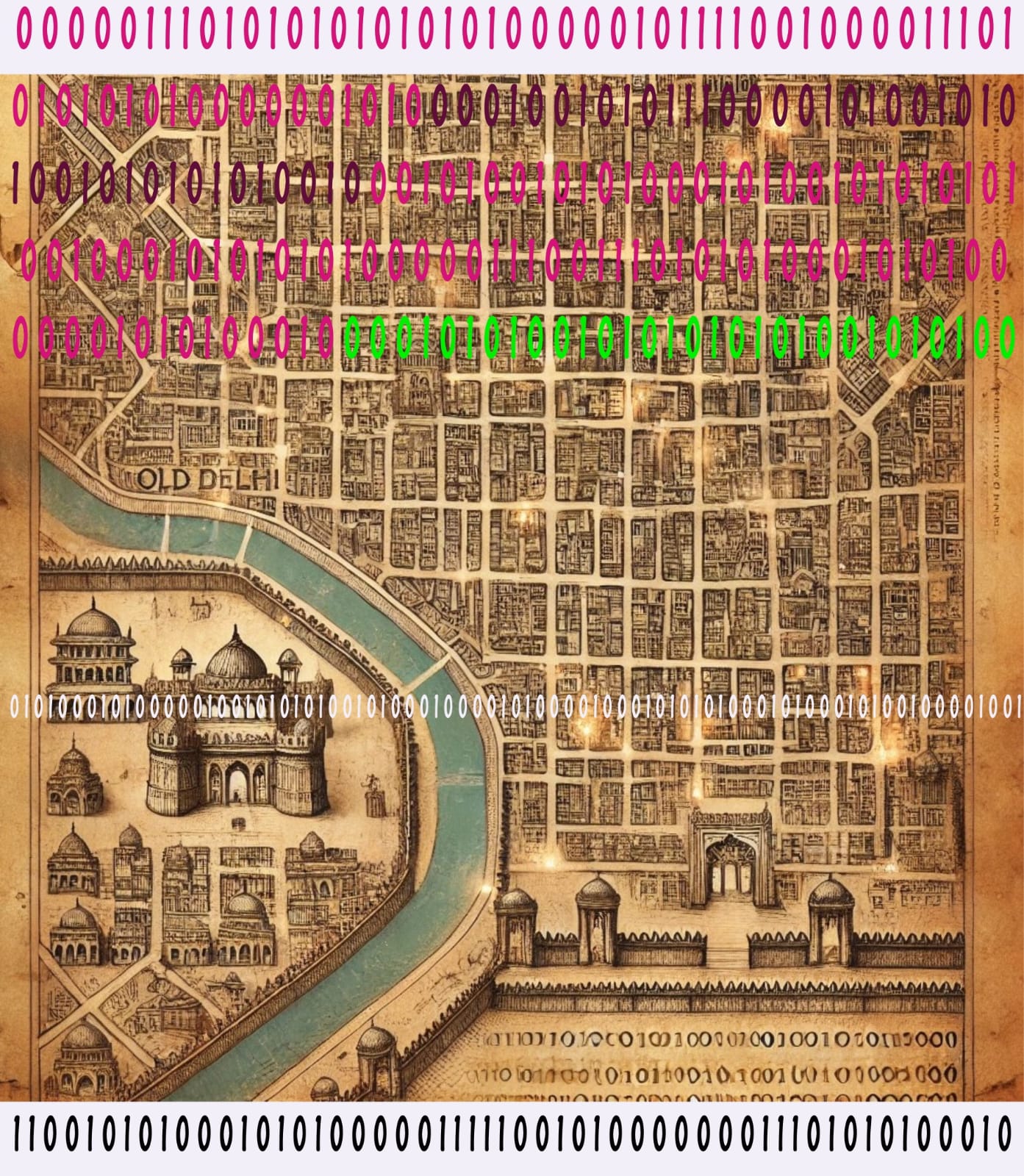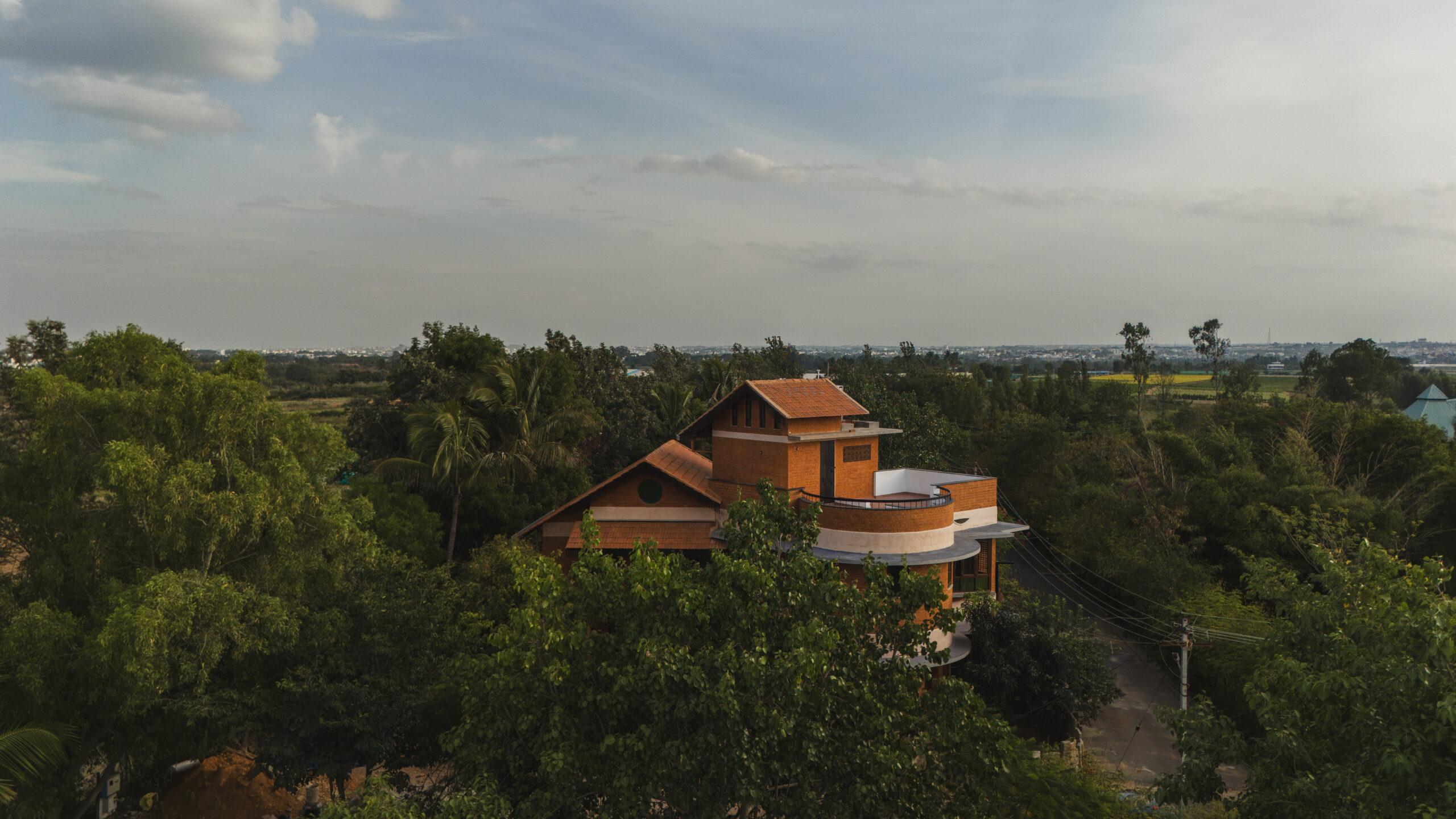Bodhgaya is where the Buddha is deemed to have received enlightenment. It is perhaps one of the holiest and oldest sites of pilgrimage for the Buddhist world. This context as well as the skills and materials relevant to the area informed our design for this hotel, which makes extensive use of brick – a cottage industry that has remained active in the area over the last 2000 years. The vocabulary of the building, using the craftsmanship of brick vaults, pillars and architraves also attempt to convey the emotions that most embody the Buddhist practice – wisdom, courage, compassion, forbearance and perseverance.
Spread over 4.5 acres, the courtyards and water bodies, as well as the sloping roofscapes, create the conditions for an ecologically sustainable and highly contextual resort for Buddhist pilgrims.
Project Facts –
Project Name & Location: Hotel at Bodhgaya
Firm Name: SJK Architects
Project Category: Architecture & Interior design
Project Area: 78 keys | 70,000 Sq.ft. |
Project Status: Completed

